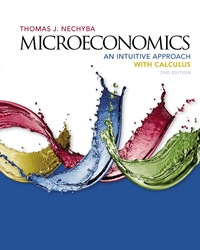=+B.** In Section 8.2.2, we derived a Laffer Curve for the case where tastes were quasilinear in
Question:
=+B.** In Section 8.2.2, we derived a Laffer Curve for the case where tastes were quasilinear in leisure. Now consider the case where tastes are Cobb–Douglas, taking the form u1c,,2 5 c a
, 112a2
. Assume that a worker has 60 hours of weekly leisure endowment that he or she can sell in the labor market for wage w.
a. Suppose the worker’s wages are taxed at a rate t. Derive the worker’s optimal leisure choice.
b. For someone with these tastes, does the Laffer Curve take the inverted U-shape described in Section 8B.2.2. Why or why not? Which of the cases described in A does this represent?
c. Now consider the more general CES function 1ac 2r 1 11 2 a2, 2r 2 21/r
. Again, derive the optimal leisure consumption.
d. Does your answer simplify to what you would expect when r 5 0?
e. Determine the range of values of r such that leisure consumption increases with t.
f. When r falls in the range you have just derived, what happens to leisure consumption as t approaches 1? What does this imply for the shape of the Laffer Curve?
g. Suppose a 5 0.25, w 5 20, and r 5 20.5. Calculate the amount of leisure a worker would choose as a function of t. Then derive an expression for this worker’s Laffer Curve and graph it.
Step by Step Answer:

Microeconomics An Intuitive Approach With Calculus
ISBN: 9781337335652,9781337027632
2nd Edition
Authors: Thomas Nechyba






